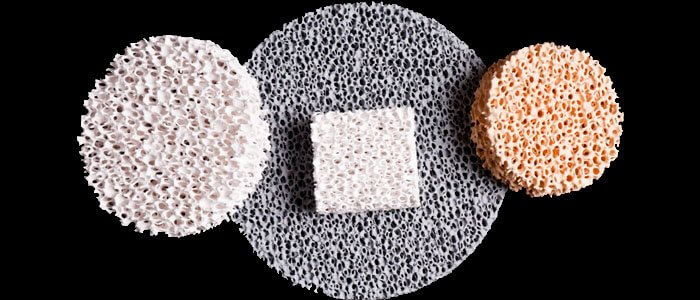Introduction:
In the realm of industrial processes, effective filtration plays a vital role in ensuring the quality and purity of various materials. One such innovative filtration technology that has gained significant attention is the foam ceramic filter. Foam ceramic filters are advanced porous structures composed of ceramic materials, offering excellent filtration efficiency and durability.
Understanding Foam Ceramic Filters:
1.1 Composition and Structure:
Ceramic filters are typically composed of alumina, silicon carbide, zirconia, or a combination of these materials. These filters have a cellular structure with interconnected pores, which facilitate the passage of molten metal or other liquids while effectively capturing impurities and contaminants.
1.2 Filtration Mechanism:
Foam ceramic filters operate on the principle of depth filtration. As the molten metal passes through the interconnected pores of the filter, impurities such as slag, oxides, and inclusions are trapped within the filter’s porous structure. This mechanism ensures improved product quality and reduces defects in castings.

Applications of Foam Ceramic Filters:
2.1 Foundry Industry:
The foundry industry extensively employs foam ceramic filters to enhance the quality of castings. These filters effectively remove impurities like oxides, non-metallic inclusions, and sand residues, thereby improving the mechanical properties and surface finish of castings.
2.2 Steel and Aluminum Production:
In steel and aluminum production, foam ceramic filters aid in the removal of solid impurities, such as refractory debris and slag, from molten metal. By eliminating these impurities, the ceramic filters contribute to the production of high-quality steel and aluminum products with improved mechanical properties.
2.3 Filtration in the Chemical and Petrochemical Industries:
Foam ceramic filters find application in the chemical and petrochemical industries for the filtration of liquids and gases. These filters effectively remove solid particles, catalyst residues, and other impurities, ensuring the purity and quality of the final product.
Equipment Used in Foam Ceramic Filter Applications:
3.1 Filter Holders:
Filter holders are essential components that hold the foam ceramic filters in place during the filtration process. These holders are typically made of heat-resistant materials, ensuring stability and durability at high temperatures.
3.2 Filtration Systems:
Filtration systems used in conjunction with ceramic filters vary based on the specific application and industry requirements. These systems may include pressure vessels, pumps, pipelines, and control mechanisms to regulate the flow rate and pressure during filtration.
3.3 Preheating and Drying Equipment:
Before utilizing foam ceramic filters, it is crucial to preheat them to remove any residual moisture and ensure their stability at high temperatures. Preheating and drying equipment, such as ovens or furnaces, are employed for this purpose.
Technological Advancements and Data:
4.1 Enhanced Filtration Efficiency:
Recent advancements in foam ceramic filter technology have resulted in improved filtration efficiency. The development of advanced porous structures, finer pore sizes, and optimized filtration media have significantly enhanced the capture and retention of impurities.
4.2 Durability and Longevity:
Foam ceramic filters have undergone substantial improvements in terms of durability and longevity. Advanced manufacturing techniques and enhanced material compositions have led to filters that withstand higher temperatures and prolonged exposure to corrosive environments.
4.3 Increased Production Yields:
The use of ceramic filters has been shown to increase production yields in various industries. By reducing defects, improving product quality, and minimizing rework, these filters contribute to higher productivity and cost savings.
4.4 Data and Performance Metrics:
The performance of ceramic filters is evaluated based on filtration efficiency, pressure drop, temperature resistance, and chemical compatibility. Manufacturers provide technical data and performance metrics to assist industries in selecting the most suitable filters for their specific applications.
Conclusion:
Foam ceramic filters have revolutionized filtration technology, offering significant improvements in various industries. The equipment used in conjunction with these filters, such as filter holders, filtration systems, and preheating equipment, ensures optimal performance and reliability. Technological advancements continue to drive the evolution of ceramic filters, enhancing their filtration efficiency, durability, and longevity. With their proven track record in improving product quality, reducing defects, and increasing production yields, ceramic filters are poised to play a crucial role in the future of filtration technology.


